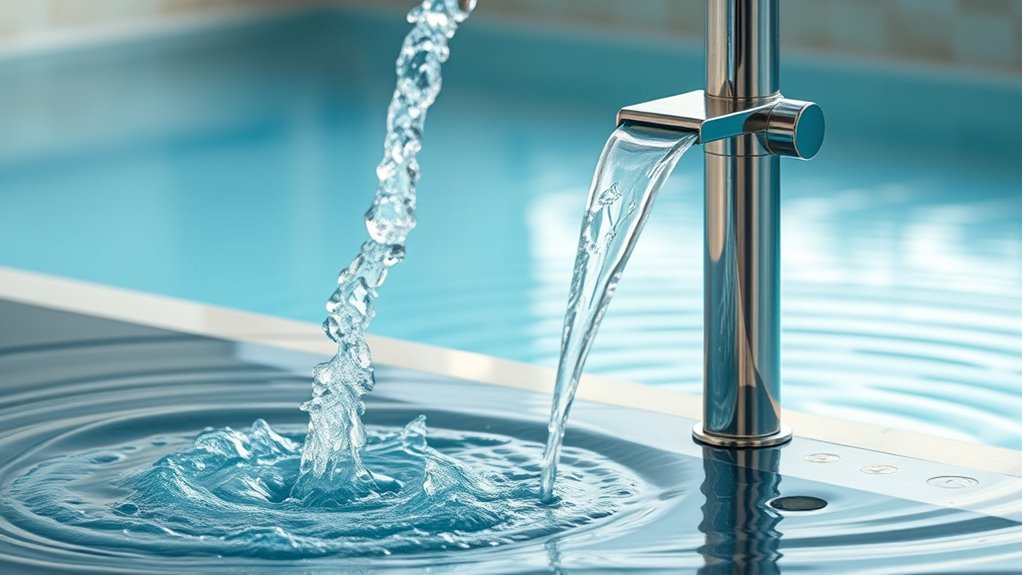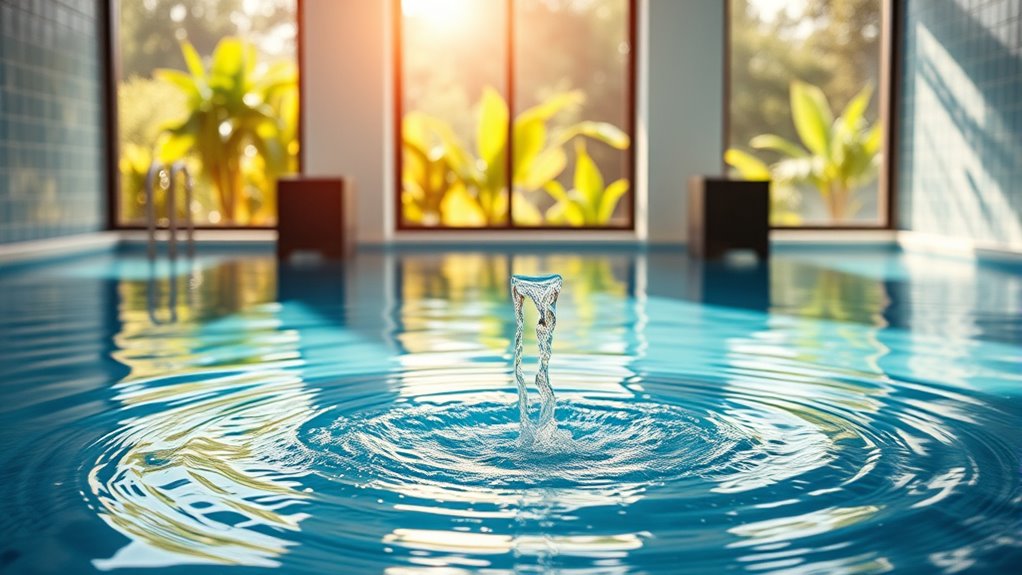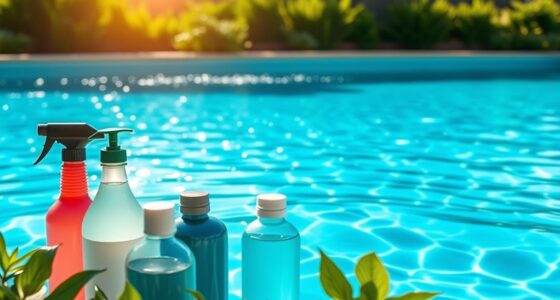Hydrotherapy pumps are essential for harnessing water’s healing properties. They enhance your recovery and relaxation by ensuring proper water circulation and temperature control. With various types like centrifugal, jet, and submersible pumps, you can find the perfect match for your therapeutic needs. Enjoy improved circulation and soothing sensations that promote well-being. Maintaining these pumps is important for safety and peak performance. Discover how these pumps can elevate your therapy experience even further.
Key Takeaways
- Hydrotherapy pumps enhance recovery by creating optimal water conditions for relaxation and healing during therapy sessions.
- Different types of pumps, like centrifugal and jet pumps, cater to various therapeutic needs and enhance water circulation.
- Consistent water flow and stable temperature provided by hydrotherapy pumps improve overall comfort and therapeutic benefits.
- Safety and regular maintenance of hydrotherapy pumps are crucial for effective operation and to prevent electrical hazards.
- These pumps support diverse therapeutic applications, from rehabilitation to sensory therapy, promoting better health and well-being.

Hydrotherapy pumps play an indispensable role in enhancing your therapeutic experience, whether you’re recovering from an injury or seeking relaxation. These devices are essential for creating the right environment in pools and therapy tubs, allowing you to fully benefit from water’s soothing properties. Various types of pumps serve distinct purposes, guaranteeing that your hydrotherapy sessions are both effective and enjoyable.
Centrifugal pumps are commonly used to circulate water in hydrotherapy pools. By utilizing centrifugal force, they efficiently move large volumes of water, which is critical for maintaining consistent water flow. This consistent flow not only enhances the therapeutic environment but also guarantees that the water temperature remains stable, allowing for a more pleasant experience.
If you’re enjoying a sensory pool or therapy tub that requires underwater operation, submersible pumps are your go-to. These pumps work effectively while submerged, delivering the right conditions for a calming and rejuvenating experience.
For specific setups where increased pressure is necessary, jet pumps come into play. They utilize high-pressure jets to create a powerful effect, enhancing your hydrotherapy experience by improving water circulation. In situations where precise dosing is needed, positive displacement pumps guarantee that the right volume of water is delivered with each stroke. This feature is especially beneficial in therapeutic applications requiring meticulous control.
When it comes to relaxation therapy, diaphragm pumps create a pulsating flow, which can enhance the soothing effects of water. This gentle rhythm mimics a massage, contributing to your overall sense of well-being. You’ll find that the comfort provided by hydro massage systems is markedly enhanced by these pumps, as they circulate water effectively, promoting relaxation and healing.
Safety considerations are paramount in hydrotherapy. Electrical components must be properly insulated to prevent shocks, and durable materials are essential for pumps to withstand constant water exposure. Regular maintenance checks are essential to guarantee that your pumps operate effectively and safely.
The versatility of hydrotherapy pumps means they can cater to a wide range of therapeutic needs. From physical rehabilitation to sensory therapy for children, these pumps facilitate the creation of engaging and safe water environments. Ultimately, hydrotherapy pumps not only support your recovery but also enhance your relaxation, making each session a step toward better health and well-being.
Frequently Asked Questions
How Often Should I Use a Hydrotherapy Pump for Optimal Results?
To achieve ideal results with a hydrotherapy pump, you should consult your healthcare provider first.
They’ll help determine the right frequency based on your specific needs. Generally, sessions are recommended several times a week, especially if you’re managing pain.
Start with shorter sessions, gradually increasing the duration and frequency as tolerated.
Consistency is key, so make it part of your routine for the best benefits in pain relief and mobility improvement.
Are There Any Side Effects Associated With Hydrotherapy Pumps?
Using hydrotherapy pumps can feel like diving into a soothing ocean, but it’s crucial to be aware of potential side effects.
You might experience skin irritation from prolonged use, or risk slipping on wet surfaces. If temperatures aren’t monitored, burns or frostbite could occur.
Infections can arise in shared facilities, especially without proper hygiene. Be cautious, and consult a professional if you have specific health concerns to guarantee a safe, enjoyable experience.
Can Hydrotherapy Pumps Be Used During Pregnancy?
Yes, you can use hydrotherapy pumps during pregnancy. They provide buoyancy support, reducing pressure on your joints while allowing safe exercise.
The warm water environment enhances circulation and helps manage common pregnancy symptoms like fatigue and body aches.
However, it’s essential to consult your healthcare provider before starting any hydrotherapy regimen to guarantee it’s safe for you and your baby.
Always prioritize your well-being while enjoying the benefits of aquatic therapy.
What Is the Cost Range for Hydrotherapy Pumps?
When you’re considering hydrotherapy pumps, you’ll find the cost range varies considerably.
Submersible pumps typically cost between $400 and $1,500, while centrifugal ones can range from $300 to $2,000.
If you’re looking at pool pumps, expect to pay between $300 and $1,200.
For deeper applications, well pumps might set you back $500 to $2,000.
Booster pumps are generally more affordable, ranging from $200 to $800 for enhancing water pressure.
Do I Need a Prescription to Use a Hydrotherapy Pump?
You mightn’t need a prescription to use a hydrotherapy pump, especially for general hydrotherapy practices like warm baths.
However, if you’re considering a specific device for medical reasons, a prescription could be necessary, particularly for insurance coverage.
It often depends on the complexity of the pump and your individual health needs.
Always check with your healthcare provider to determine what’s required for your situation and to guarantee you’re using it safely.
Conclusion
In the dance of healing waters, hydrotherapy pumps offer a revitalizing embrace for both body and mind. By harnessing the soothing power of water, you’re not just treating ailments; you’re rejuvenating your spirit. So, take the plunge! Experience the waves of relief that wash over you, and let the gentle currents guide you toward wellness. With each session, you’re one step closer to a revitalized you, where pain drifts away like leaves on a tranquil stream.









